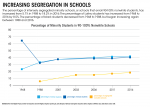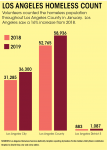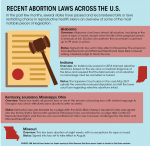A newly established policy advisory board will oversee cannabis-related events and research on campus.
The University of California released two memorandums outlining requirements for cannabis-related research on campus and potential risks of receiving funding from businesses that profit from marijuana-related activities.
UCLA established the Cannabis Advisory Board in April, which is responsible for drafting policy and disseminating information about cannabis-related research and activities, in response to the two memos, said Vice Chancellor Ann Pollock.
Although California Proposition 64 allows for the recreational use of marijuana, the UC is required to adhere to federal regulations regarding the drug. If the UC violates federal regulations, it risks losing federal funding, according to memorandum 19-02, authored by Lourdes DeMattos, associate director of Research Policy Analysis & Coordination.
Memorandum 18-01 states researchers who plan on cultivating or distributing cannabis must receive the drug through the National Institute on Drug Abuse, and receive approval from the Food and Drug Administration. Researchers must also receive permission from the Drug Enforcement Administration to conduct their studies.
However, memo 18-01 also states research about cannabis that does not include the distribution, cultivation, use or possession of the drug are not subject to the same regulations.
News of the policies established in the memos as well as the creation of the policy advisory board came as a surprise to Brent Gerson, a member of the UCLA Anderson Cannabis Business Association and master’s student in the school of management. Gerson said he found out about the policy while coordinating a cannabis-focused research summit.
The Cannabis Oriented Research Summit aimed to invite policy researchers to campus to discuss safe access to medication, disseminate information about misuse of the substance and destigmatize the industry, Gerson said.
However, while planning the event, Gerson said a faculty member informed him and his colleagues that the CAB needed to approve the event.
“We’ve never heard of this Cannabis Advisory Board because it doesn’t exist,” Gerson recalled saying to the faculty member.
Gerson said some of the UCLA policy’s restrictions include a ban on cannabis industry-sponsored research or events.
“We want the Anderson administration to rise up and help us fight this policy of the central UCLA administration,” Gerson said.
He also said he thinks the policy could potentially impede progressive cannabis research at UCLA, and does not align with the interests of California voters.
“The voters of California voted in favor of legalizing cannabis, and we derive a tremendous amount of tax revenue from cannabis, and cannabis is going to be one of the largest growing industries of the next decade,” Gerson said.
Maha Haq, founder of the UCLA CannaClub and a fifth-year sociology and mathematics student, said she understands why the university needs to impose regulations on cannabis industry presence on campus.
“I feel, like a lot of the students, we have an understanding that this is still a federally illegal substance, and these rules were instated by a research vice chancellor, so we understand that to maintain federal funding for research, you have to pass these kind of measures,” Haq said.
She added that the policy will not stop her student organization from informing others about cannabis and the industry, especially on other campuses.
“We’re not concerned, we understand that this is formality, to maintain funding for research, and it is still a federally illegal substance and for public schools,” Haq said. “We understand it.”
Pollock said CAB is currently composed of only faculty and administrators, but plans to seek input from other experts on campus going forward.
Although Haq said she understands the rationale behind the policy, she would prefer having student representation on the board in the future.





